If you live in the Southeastern United States and dream of growing your own juicy, sun-kissed grapes, Muscadine grapes are your perfect match. Native to the southeastern U.S., Muscadines thrive in warm, humid conditions where other grapes might struggle. Known for their bold flavor and rich antioxidant content, these grapes are ideal for fresh eating, winemaking, jellies, and more.
This comprehensive guide will walk you through everything you need to know — from choosing the right varieties to planting, care, and harvesting your Muscadine vines successfully.
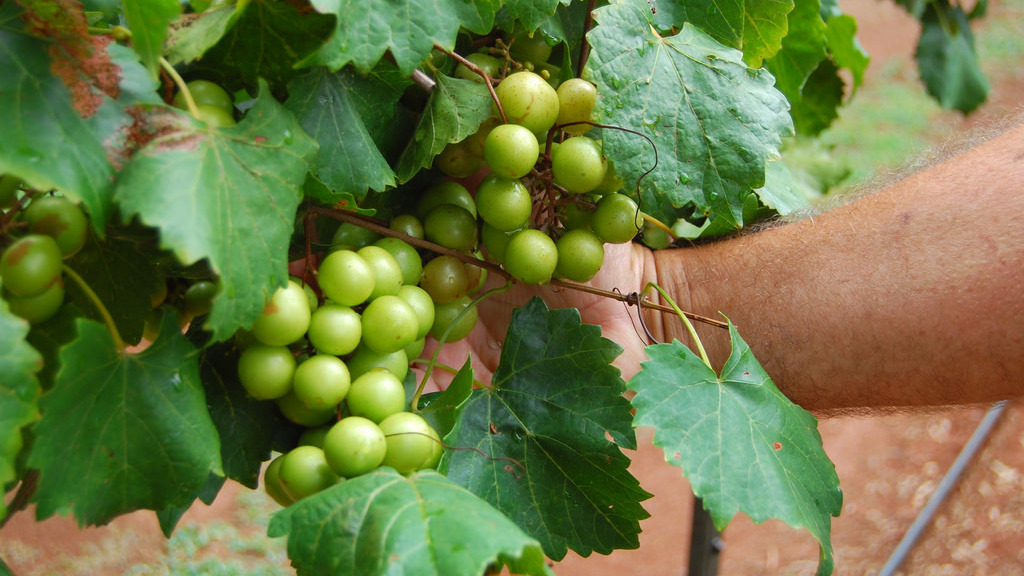
Why Choose Muscadine Grapes?
Muscadine grapes (Vitis rotundifolia) are prized for their adaptability and resilience. Unlike European grape varieties, Muscadines can handle the hot, muggy summers and unpredictable weather common to the Southeast. They’re naturally resistant to many pests and diseases, making them an excellent choice for home gardeners and small orchards alike.
Benefits of growing Muscadines:
- Thrive in warm, humid climates
- Resistant to Pierce’s disease and fungal problems
- High in antioxidants like resveratrol
- Excellent for fresh eating, wines, jams, and juices
- Long-lived and productive vines
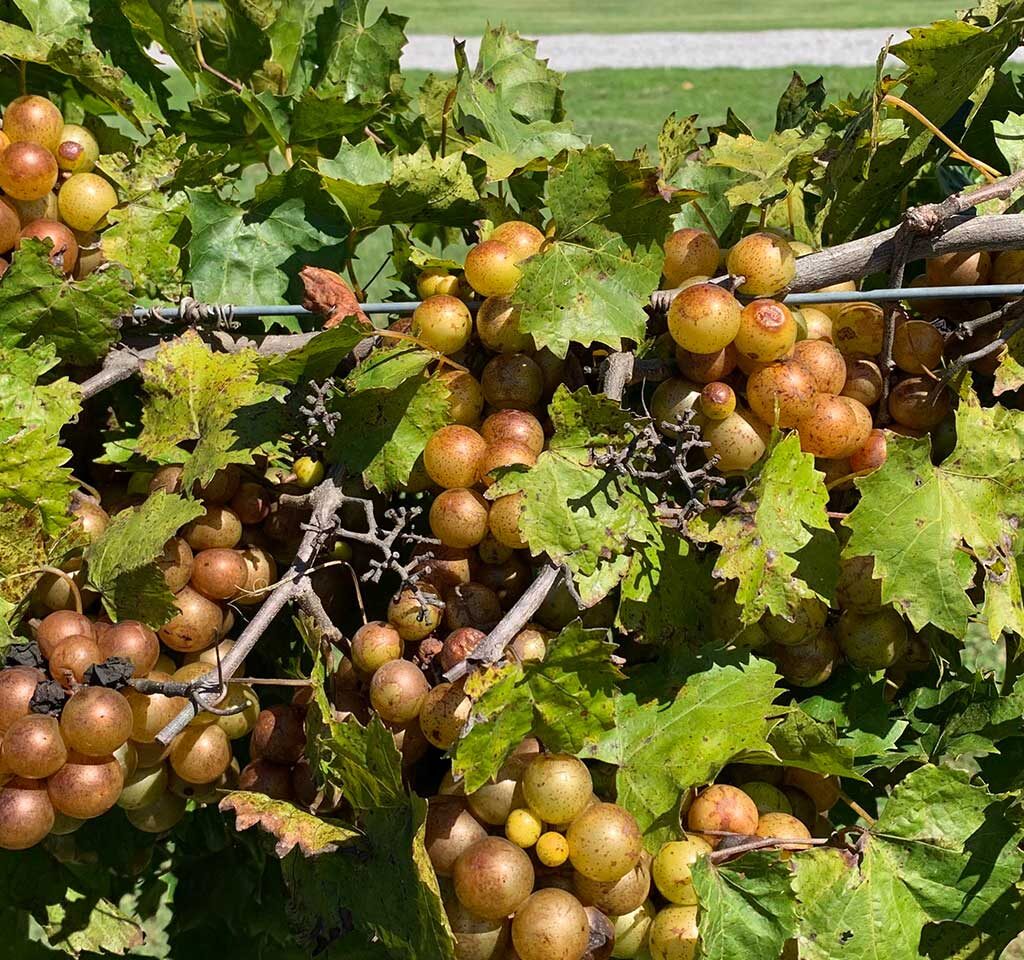
Best Muscadine Varieties for the Southeast
When selecting Muscadine varieties, consider whether you prefer grapes for fresh eating, winemaking, or both. Also, pay attention to whether the variety is self-fertile or requires a pollinator.
Self-Fertile Varieties:
- Carlos: Great for wine and juice, heavy producer
- Noble: Popular for red wine production
- Alachua: Excellent disease resistance, great for fresh eating
Female Varieties (Require a Pollinator):
- Scuppernong: The classic bronze-colored Muscadine
- Big Red: Large, flavorful red grapes
- Cowart: Sweet, black fruit with a long harvest season
Pro tip: If you plant female varieties, be sure to include a self-fertile type nearby for proper pollination.
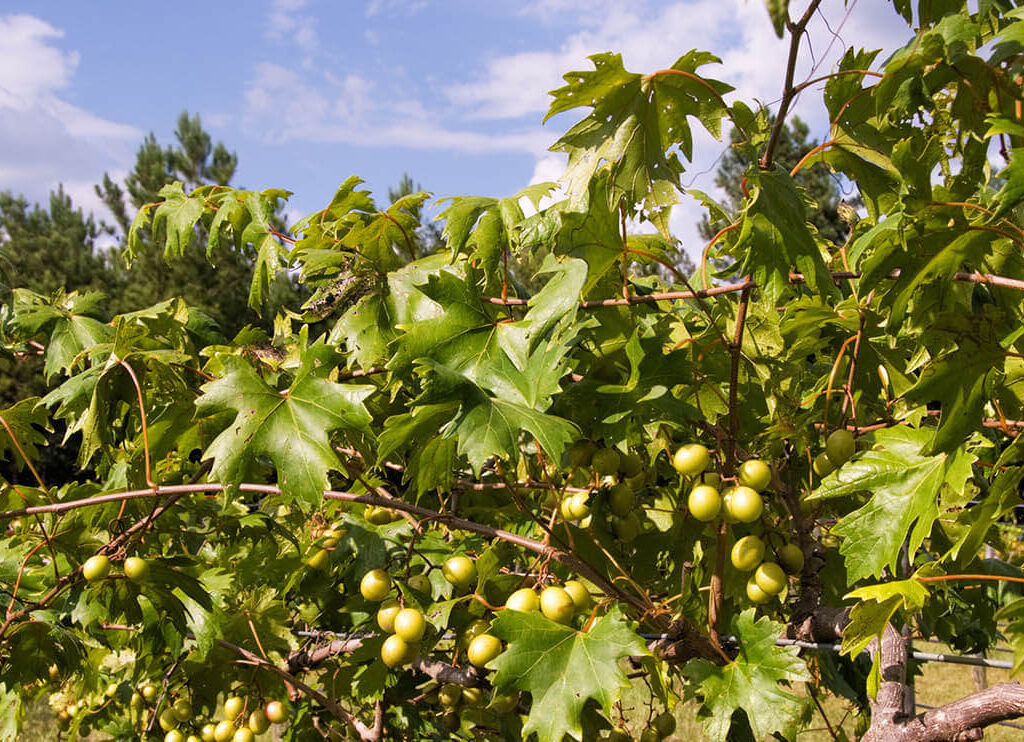
How to Plant Muscadine Grapes
1. Choose the Right Location
Muscadines need:
- Full sun — at least 6-8 hours daily
- Well-drained, sandy or loamy soil with a pH of 5.5 to 6.5
- Good air circulation to prevent fungal issues
Avoid low-lying areas where water can accumulate and frost pockets can form.
2. Prepare the Soil
Test your soil’s pH and adjust as needed. Use lime to raise pH or elemental sulfur to lower it. Work in organic matter like compost to improve drainage and fertility.
3. Planting Steps
- Space vines 12-20 feet apart in rows
- Dig holes twice as wide and deep as the root ball
- Mix a little compost or aged manure into the hole
- Place the plant so the crown is level with the soil surface
- Backfill and water thoroughly
- Mulch with pine straw or wood chips to retain moisture and suppress weeds
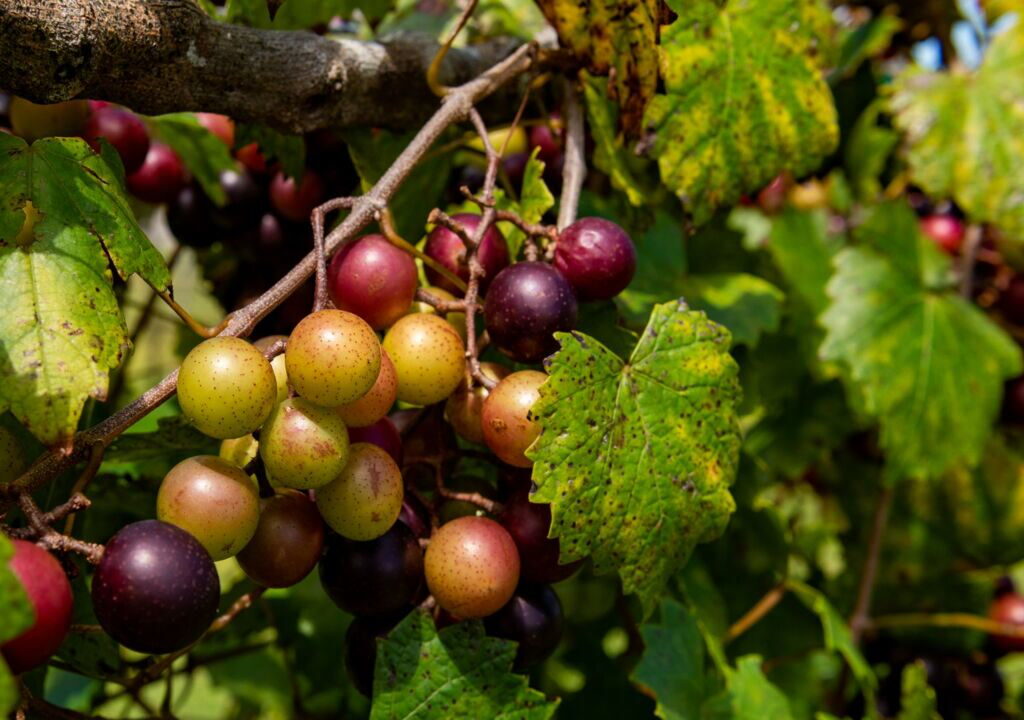
Trellising and Training Your Vines
Muscadine vines need sturdy support. The most common trellis systems are:
- Single Wire Trellis: One horizontal wire, 5-6 feet off the ground
- Double Curtain Trellis: Two parallel wires with vines trained along both sides
Training Tips:
- In the first year, focus on establishing one strong vertical shoot
- Tie the shoot to a stake or wire for support
- Pinch off side shoots until the main vine reaches the wire
- Once it reaches the wire, allow it to split into two arms and grow horizontally
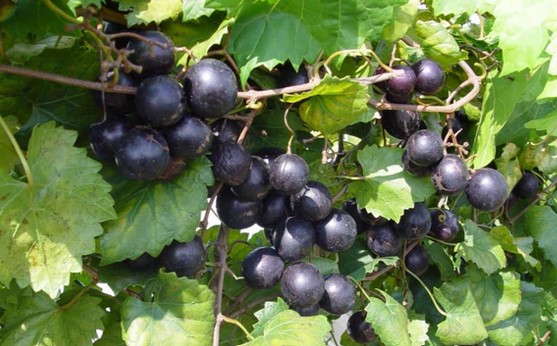
Watering and Fertilizing Muscadines
Watering:
- Keep soil moist (but not soggy) during the first year
- Mature vines tolerate some drought but benefit from regular watering during dry spells and fruiting
Fertilizing:
- Apply a balanced fertilizer (like 10-10-10) after new growth begins in spring
- Fertilize again in midsummer
- Avoid over-fertilizing, as this promotes leafy growth over fruit production
Pruning Muscadine Vines
Pruning is crucial for vine health and productivity. Without regular pruning, vines become tangled, and fruit quality diminishes.
When to prune:
Late winter (January–February) while the plant is dormant.
How to prune:
- Cut back lateral branches to 2-4 buds from the main arms
- Remove any dead, weak, or crossing branches
- Maintain the desired shape along your trellis system
Don’t be alarmed by heavy sap flow (called “bleeding”) after pruning — it’s normal and harmless.
Common Pests and Diseases
While Muscadines are hardy and disease-resistant, a few pests and issues can occur:
Pests:
- Japanese beetles
- Grape root borers
- Aphids
Control these with hand-picking, horticultural oil sprays, or insecticidal soap when necessary.
Diseases:
- Black rot
- Powdery mildew
- Ripe rot
Prevent disease by:
- Ensuring good air circulation
- Removing fallen leaves and fruit
- Using organic fungicides like sulfur or neem oil if needed
Harvesting Muscadine Grapes
When to harvest:
- Typically from August to October depending on variety and climate
- Grapes are ripe when fully colored and slightly soft to the touch
- Unlike other grapes, Muscadines ripen individually, not in clusters
How to harvest:
- Gently twist or clip ripe grapes from the vine
- Collect regularly to avoid fruit drop and spoilage
Using and Storing Your Muscadines
Fresh eating: Enjoy as a healthy snack — just remember, Muscadines have thick skins and large seeds.
Preserving:
- Make jellies, juices, or wines
- Freeze grapes whole for smoothies and baking
- Refrigerate fresh grapes for up to a week
Final Thoughts
Growing Muscadine grapes in the Southeast is a rewarding, sustainable project that adds beauty to your garden and fresh, flavorful fruit to your table. With the right site, proper care, and a little patience, you’ll enjoy bountiful harvests of these native American grapes for years to come.

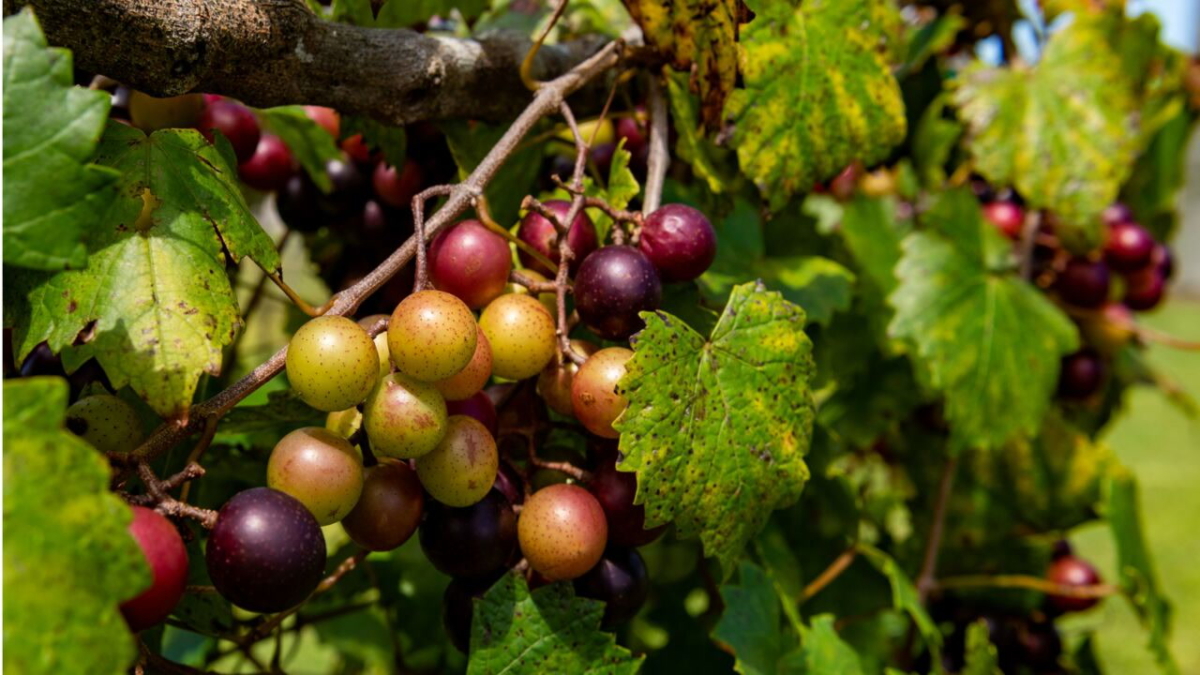




Leave A Comment